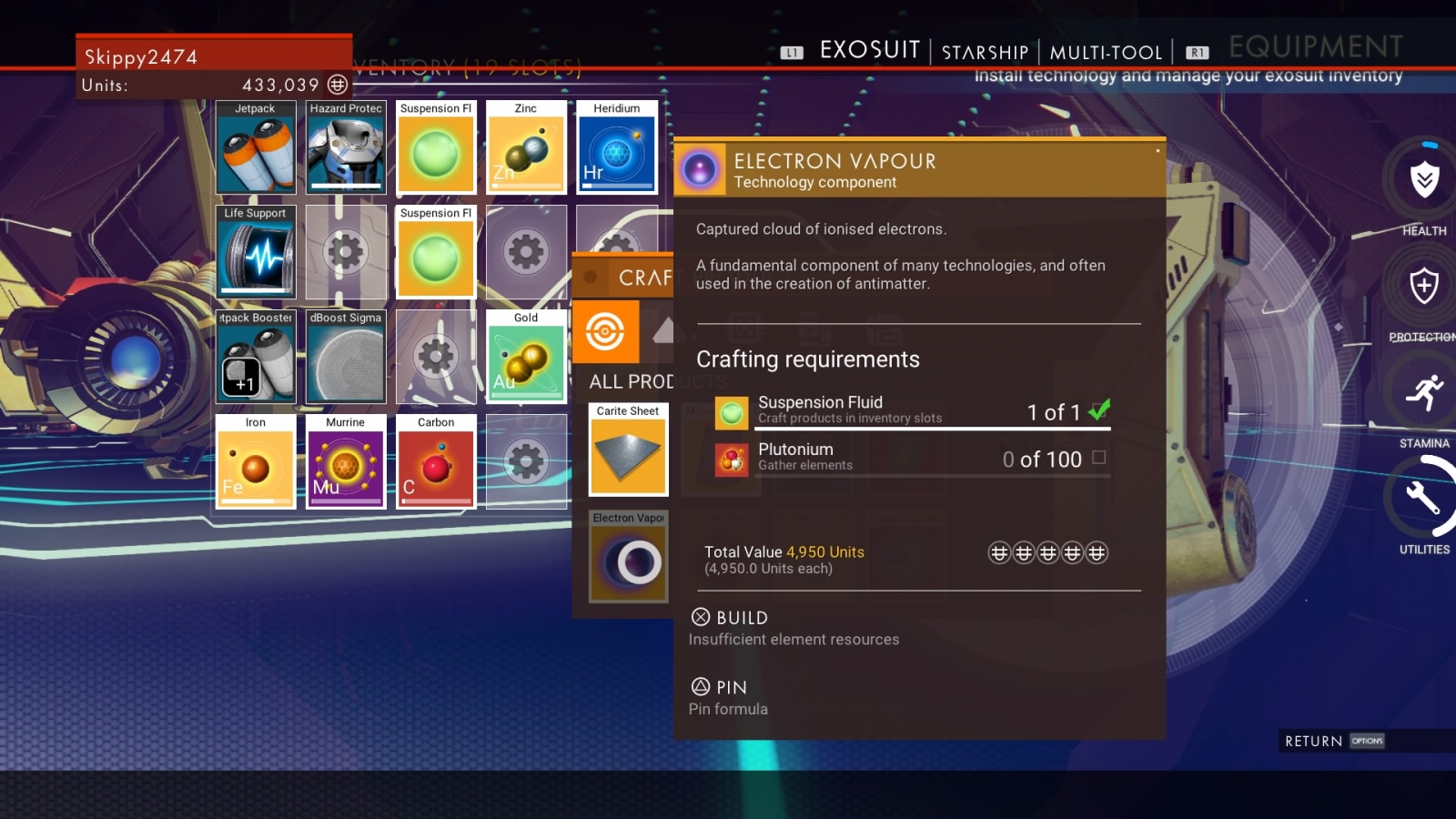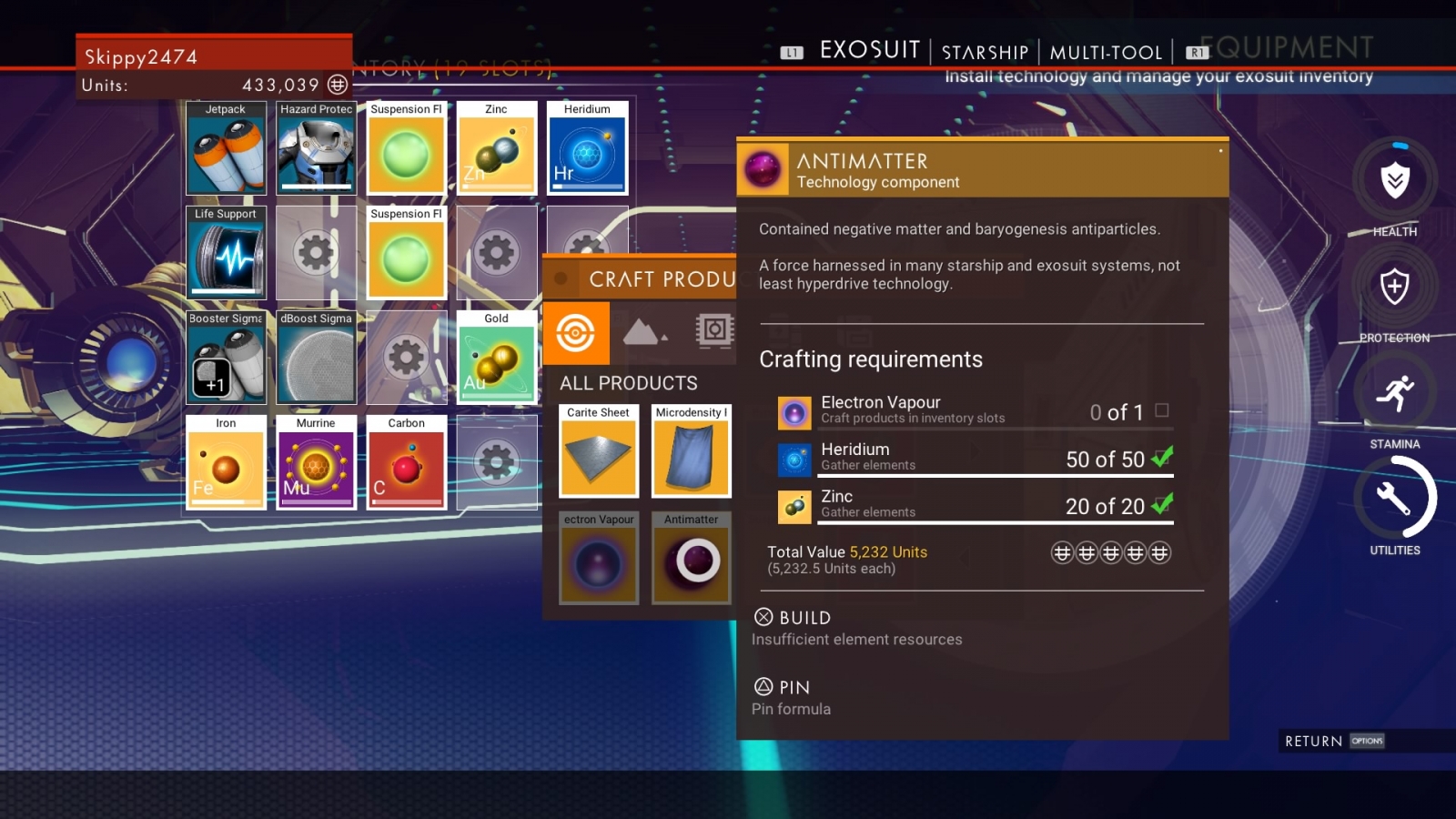No Man's Sky guide: How to get Antimatter and Warp Cells for your Hyperdrive
Jump from star system to star system quickly with our latest guide for Hello Games' sci-fi game.
As easy as it is to spend hours exploring the surface of just one planet in an essentially-infinite galactic setting of PS4 and PC sci-fi No Man's Sky, eventually the urge to visit other worlds sets in. With 18 quintillion planets out there, spending too much time on just one seems a bit of a waste.
To move from planet to planet requires red isotope elements like Carbon, Thanium9 and Plutonium, which are plentiful and found on every planet.
To move from star system to star system requires a Warp Cell, Antimatter, two other crafted materials and a little more work.
So here's your IBTimes UK guide to crafting all of the above.
Given the nature of the game (each player will mostly see and explore entirely different, procedurally generated planets to each other) we can't give any real specifics on where to go, but we can give you can idea of what to look out for.
No Man's Sky nudges players along an early introductory path that teaches them the basics of the game and ends with them able to activate their Hyperdrive and shoot off to another star system. Along the way you'll get the blueprints required to make everything.
Below is everything you'll need, the order you'll need to make them and where to find each material.
Step One: Suspension Fluid
- Carbon (50)
Carbon is a red isotope element and is plentiful on the vast majority of planets (certainly each one we've visited so far). It can be found from vegetation you destroy with your Multi-Tool and from animals you kill, if you're feeling particularly ruthless.
Step Two: Electron Vapour
- Suspension Fluid
- Plutonium (100)
Suspension Fluid is used in the crafting of Electron Vapour, which also requires 100 pieces of Plutonium – the rarest of the red elements. Plutonium can still be found regularly however, typically in large, spiky crystal outcrops.
Step Three: Antimatter
- Electron Vapour
- Heridium (50)
- Zinc (20)
That Electron Vapour is used in the creation of Antimatter, which also requires 50 Heridium (a blue silicate element) and 20 Zinc (a yellow oxide element). Heridium is typically found in large verticle oblong outcrops which get a holographic overlay when scanned. Zinc meanwhile is typically found in yellow plants.
Step Four: Warp Cell
- Antimatter
- Thanium9 (100)
That piece of Antimatter is used to create a Warp Cell, which also requires 100 pieces of Thanium 9, a red element commonly found in plants and asteroids.
With the Warp Cell crafted, simply use it to fuel your Hyperdrive and you're off. Good luck, traveller.






For all the latest video game news follow us on Twitter @IBTGamesUK
© Copyright IBTimes 2025. All rights reserved.




















